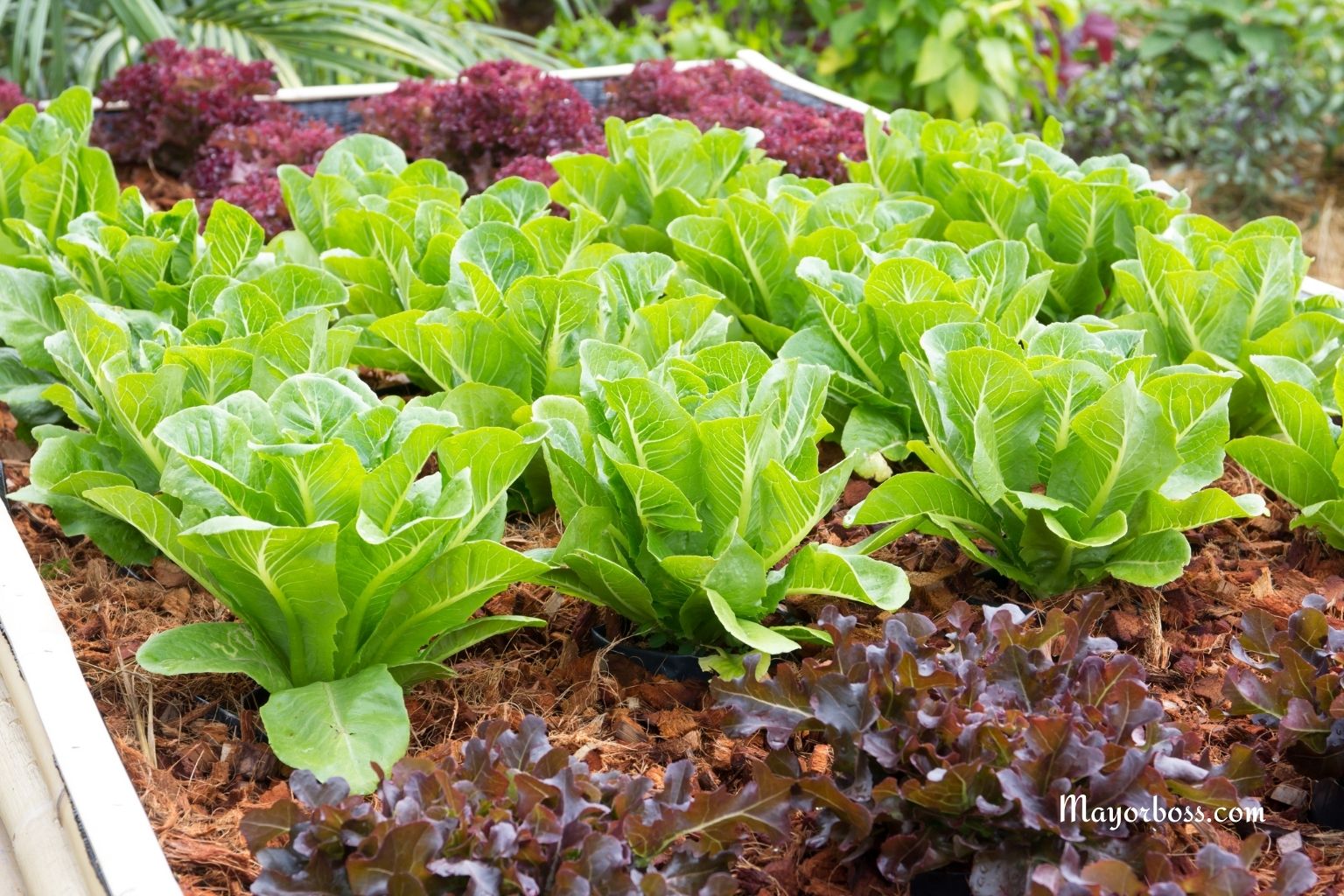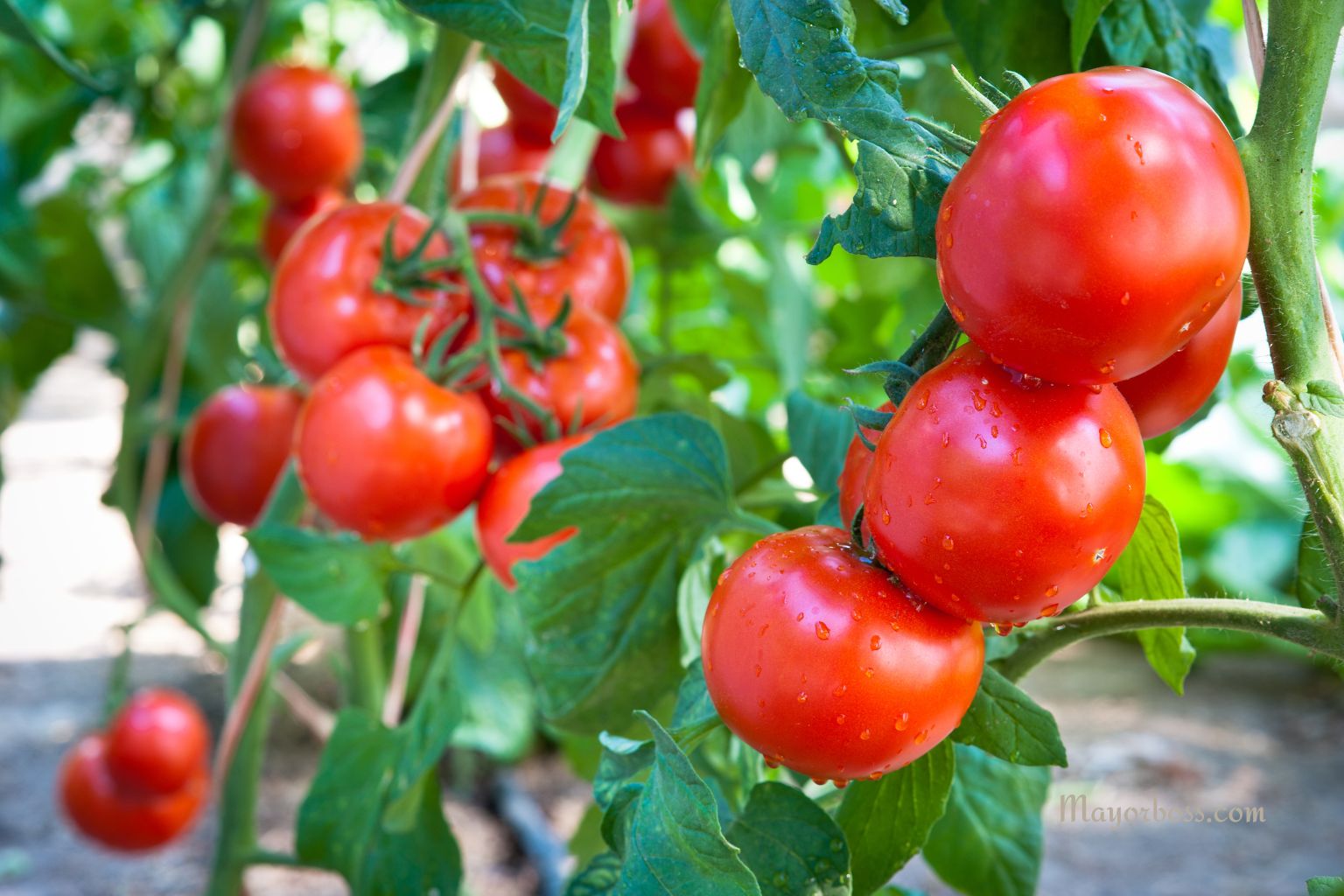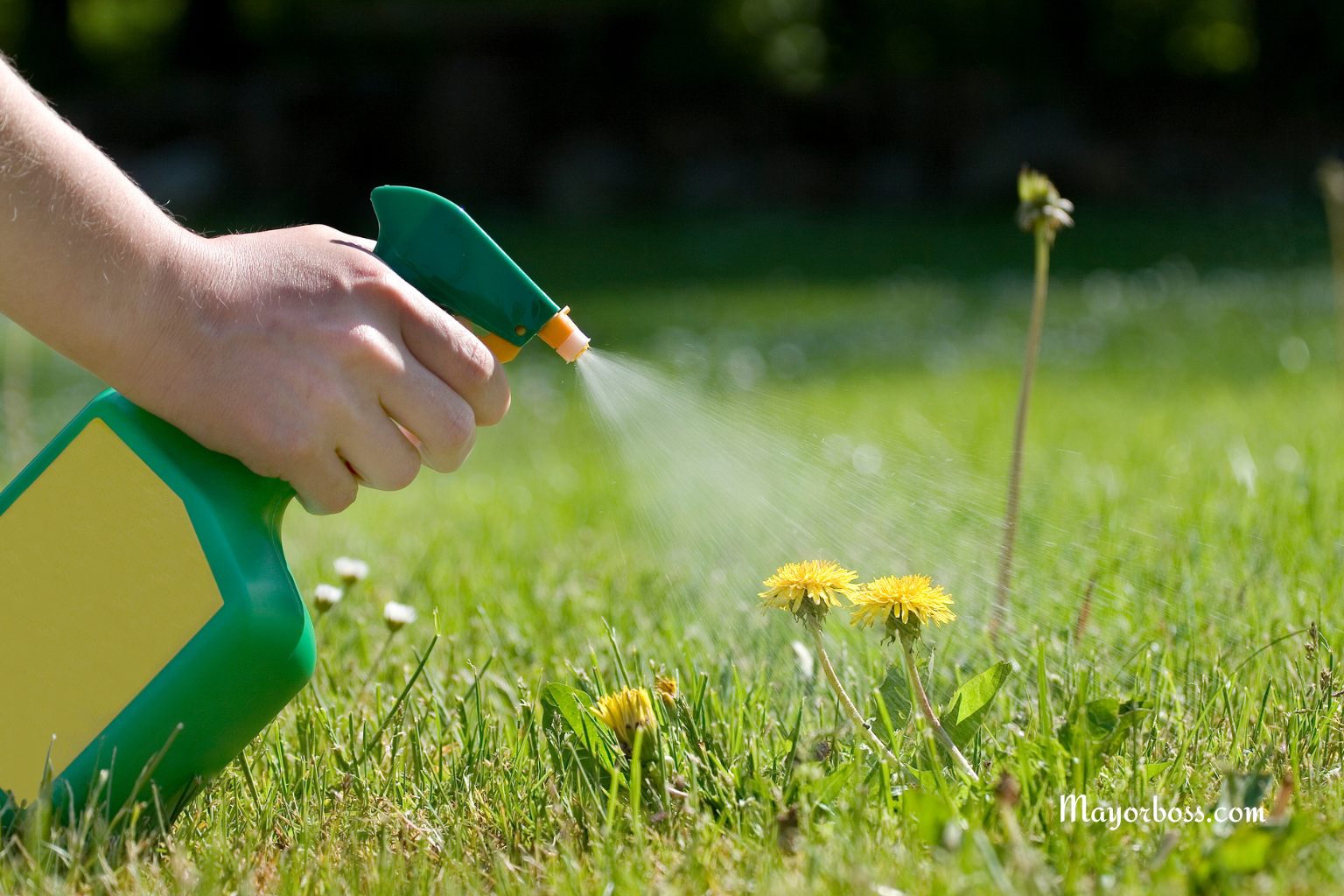Why Your Tomatoes Are Rotting on the Bottom (And How to Fix It Fast)
Tomatoes rot on the bottom due to a condition called blossom end rot, caused by a calcium imbalance and inconsistent watering. You can stop it by watering evenly, mulching your plants, and ensuring your soil has enough calcium. Quick action can save your harvest.
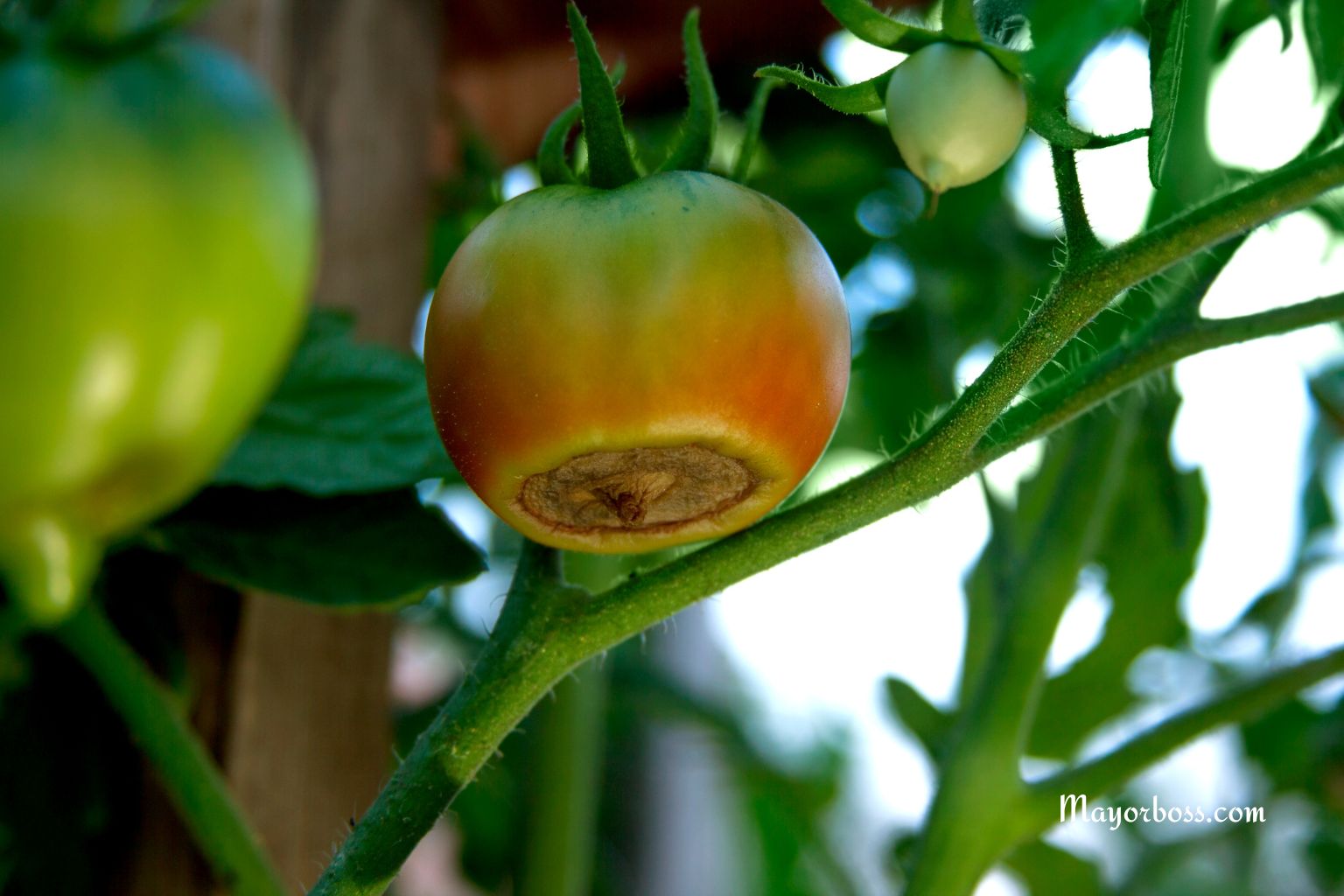
Quick-Action Checklist
- Water your tomatoes evenly—don’t let the soil dry out.
- Mulch your plants to keep moisture steady.
- Test and, if needed, correct your soil’s pH and calcium levels.
- Avoid heavy doses of nitrogen fertilizer.
- Remove any tomatoes showing signs of rot.
Have you noticed your tomatoes developing soft, dark spots at the bottom, right where the flower once was? If so, you’re dealing with blossom end rot. This is a common problem in gardens around the world, but it can be frustrating, especially when you’re looking forward to juicy, ripe tomatoes.
Blossom end rot isn’t a disease. Instead, it’s a physiological disorder. The main cause is a lack of calcium in the developing fruit. But the story isn’t always as simple as not having enough calcium in your soil. More often, it’s about how the plant absorbs and uses the calcium.1
What Causes Blossom End Rot?
Calcium Imbalance
Tomatoes need calcium to grow healthy fruit. Calcium strengthens cell walls, helping tomatoes hold their shape and stay firm. If the fruit doesn’t get enough calcium as it grows, the cells at the blossom end—where the flower was—break down. That’s when you see the dark, sunken spots.
Inconsistent Watering
Calcium moves through a tomato plant with water. If the soil goes from very dry to very wet, or if watering is irregular, the plant can’t pull calcium up to the fruit quickly enough. Even if your soil has plenty of calcium, erratic watering can lead to blossom end rot.
Fast Growth and High Temperatures
Hot weather, rapid plant growth, or heavy use of fertilizers (especially those high in nitrogen) can all affect how well a plant can transport calcium. Sometimes, the plant grows too quickly for its roots to keep up.
Spotting the Signs
Blossom end rot is easy to recognize. Look for:
- Dark, leathery, or water-soaked spots at the bottom (blossom end) of green or ripening tomatoes.
- The spots may start small, but quickly grow.
- The affected area becomes sunken and turns black or brown.
- Sometimes, the rest of the tomato looks healthy, but the bottom is damaged.
What You Can Do—Fast Fixes and Long-Term Solutions
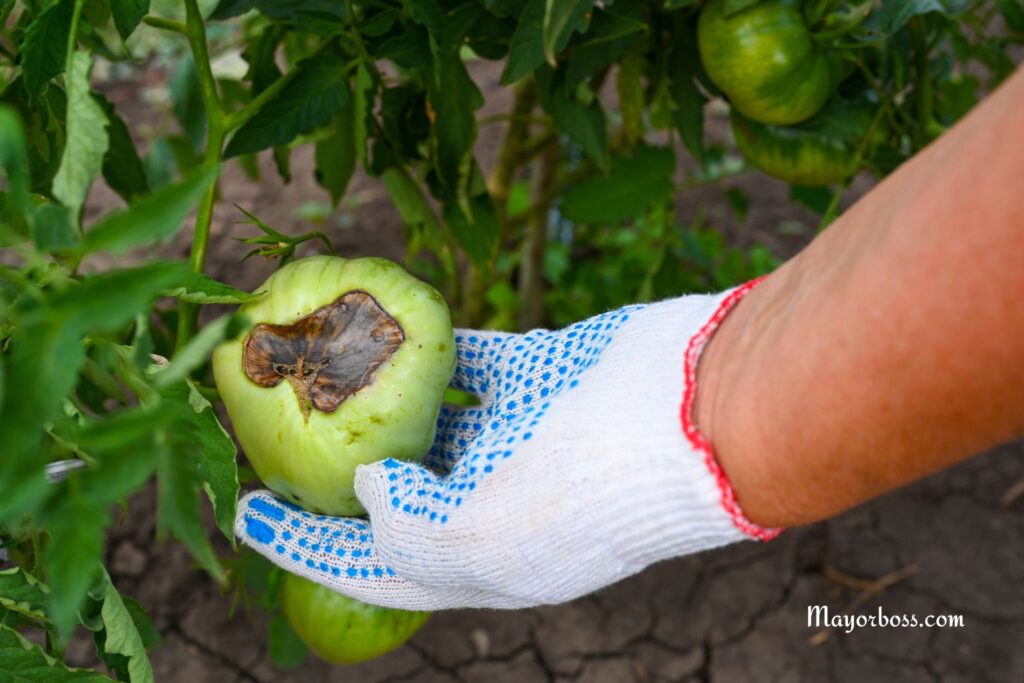
If you catch blossom end rot early, you can still save much of your harvest. Here’s what works:
1. Water Consistently
Make it a goal to keep your soil evenly moist. Don’t let it dry out completely, and don’t flood it, either. Deep watering is best—aim for about one to two inches of water per week, depending on the weather. Mulching with straw or compost helps retain moisture and keeps the soil temperature steady.
2. Check Your Soil
Test your soil’s pH and calcium levels. Tomatoes do best in soil with a pH between 6.2 and 6.8. If your soil is too acidic or alkaline, your plants may not absorb calcium well, even if it’s present.
3. Add Calcium If Needed
If your soil is low in calcium, adding garden lime or gypsum can help. But remember, adding calcium only works if the plant can take it up—consistent moisture is still key. Sprays containing calcium are available, but these only help with future fruit, not ones already affected.
4. Avoid Over-Fertilizing
Too much nitrogen can speed up leafy growth at the expense of fruit health. Use balanced fertilizers. Look for options with lower nitrogen and higher phosphorus and potassium, especially as your plants begin to flower and set fruit.
5. Remove Affected Fruit
It’s best to pick and discard tomatoes with blossom end rot. This lets the plant focus its energy on healthy fruit and reduces the risk of pests or mold.
Preventing Blossom End Rot in the Future
Here are steps you can take:
- Mulch your tomatoes: Mulch acts like a moisture blanket, helping roots stay cool and moist even in hot weather.
- Water deeply and regularly: A steady routine helps your plant transport calcium where it’s needed.
- Test your soil every season: Regular soil tests help you spot problems before they affect your plants.
- Don’t disturb roots: Once your tomatoes are growing, avoid digging around their roots, as this can interrupt their ability to absorb water and nutrients.
When to Expect Improvement
If you start correcting your watering and soil habits now, your newer tomatoes should come in healthy. The affected fruit will not recover, but future ones can be saved. Most gardeners notice improvement within a few weeks.
Frequently Asked Questions
1. Can I eat tomatoes with blossom end rot?
You can cut away the rotted portion and eat the rest if the fruit is otherwise healthy. Always check for mold or other spoilage.
2. Is blossom end rot contagious?
No, it doesn’t spread from one fruit to another. It’s a nutritional issue, not an infection.
3. Will adding eggshells to the soil help?
Eggshells release calcium very slowly and may not provide quick results. For a fast fix, use agricultural lime or gypsum.
4. Does blossom end rot affect other vegetables?
Yes, it can also affect peppers, squash, and eggplants, but it’s most common in tomatoes.
5. Can container-grown tomatoes get blossom end rot?
Absolutely. In fact, potted plants are often at higher risk because pots dry out more quickly. Pay close attention to watering and fertilizing.

